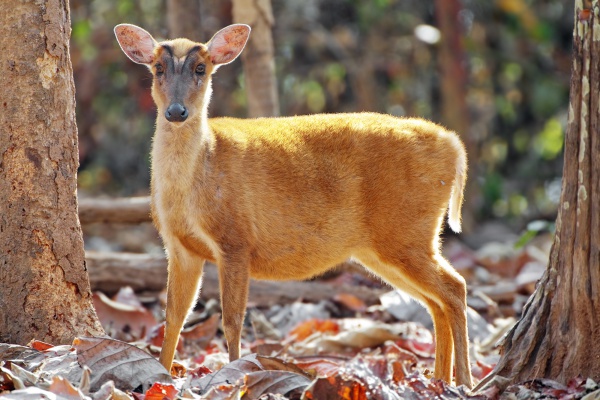Facts About Muntjac
Muntjacs, often referred to as barking deer or rib-faced deer, belong to the genus Muntiacus and are native to South and Southeast Asia. These intriguing creatures are believed to have roamed Earth for 15-35 million years, with their remains discovered in Miocene deposits across various countries.
Most muntjac species are classified as Least Concern or Data Deficient by the IUCN. However, a few face more significant threats: the black muntjac is listed as Vulnerable, the Bornean yellow muntjac as Near Threatened, and the giant muntjac as Critically Endangered.
The word "muntjac" derives from the Latinized version of the Dutch term "muntjak" which itself was borrowed from the Sundanese word "mēncēk." Muntjacs are found in several Asian countries, including India, Sri Lanka, Myanmar, Vietnam, Indonesia, Taiwan, and southern China. Additionally, they inhabit areas such as the lower Himalayas in Nepal and Bhutan. Interestingly, Reeves's muntjac has become an invasive species in the United Kingdom and parts of Japan.
Unlike many other deer, muntjacs do not have a specific mating season and can reproduce year-round. Males possess short antlers that can regrow, but they primarily use their "tusks"—downward-pointing canine teeth—for territorial battles. Muntjacs hold particular interest for scientists studying evolution due to their chromosomal variations and the discovery of new species. For instance, the Indian muntjac has the lowest recorded chromosome number among mammals.
There are 12 recognized species within the genus Muntiacus, including:
- Indian muntjac
- Reeves's muntjac
- Hairy-fronted muntjac
- Fea's muntjac
- Bornean yellow muntjac
- Roosevelt's muntjac
- Gongshan muntjac
- Giant muntjac
- Truong Son muntjac
- Leaf muntjac
- Sumatran muntjac
- Pu Hoat muntjac
Each species exhibits unique characteristics and occupies distinct habitats, contributing to the rich biodiversity of their regions.

 India
India